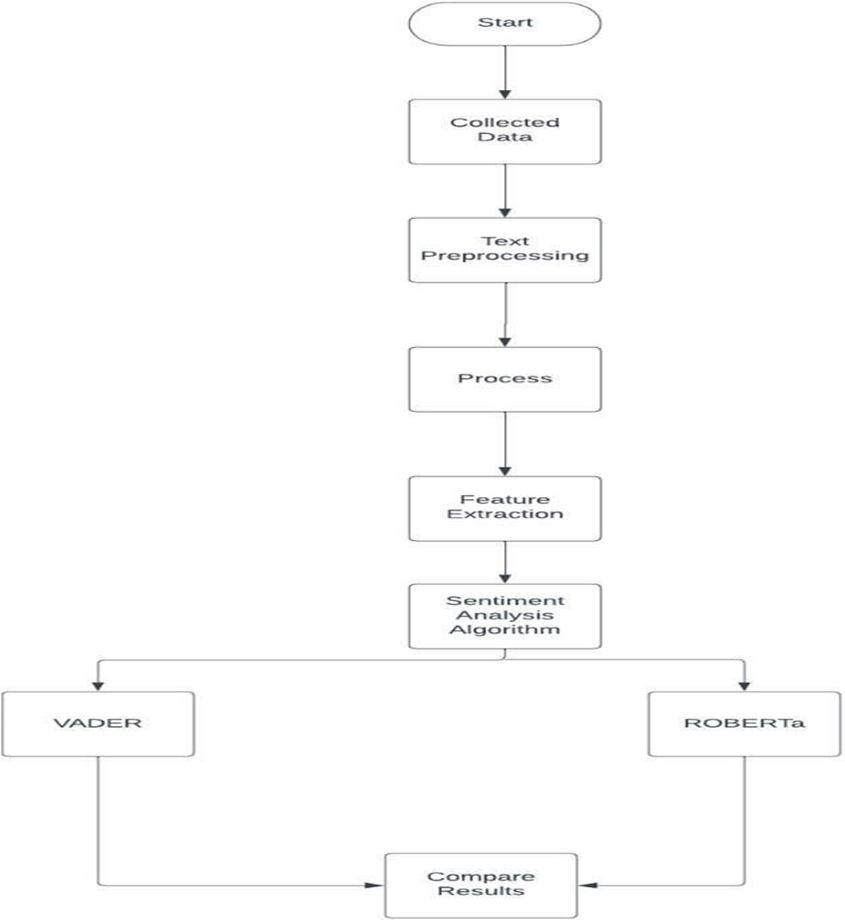
4 minute read
Detailed Classification of Customer Reviews Using Sentiment Analysis
Department Of Information Technology Bachelor of Engineering in Information Technology, G.H. Raisoni College of Engineering (Autonomous Institute Affiliated to Rashtrasant Tukdoji Maharaj Nagpur University, Nagpur)

Advertisement
Abstract: With the rapid of Growth of E-Commerce websites, there is no doubt that people are drawn to online shopping more nowadays. As people are drawn to it, so are the sellers. But sellers can differentiate in quality as well as quantity. To adjust to the needs of the consumer, some sellers provide luxury items and some focus on fulfilling the needs of the consumer at normal rates. To make it easier for consumers to decide which product suits for their demands and needs, customer review on ECommerceWebsites is a proficient way for consumers to get what they arelooking for. In today’s world, customer’s reviews can have bigimpacts on the sales of a product.
It can also let the seller and manufacturer know if their product is lacking in quality or not.Favorable reviews can attract New Customers while bad reviews can result in less sales of a product. This can also maintain the reputation of Brand or a manufacturer as the people who have previously bought a product from them, will buy their products again and this will promote Customer-Brand loyalty. Studying the reviews has become an essential part of the E- Commerce field and Sentiment Analysis is a process that greatly helps in determining the Statistics of Customer Reviews. Sentiment analysis, also known as opinion mining, is the computational study of people's written opinions, feelings, attitudes, and emotions. It is one of the most active research areas in natural language processing and text mining in recent years. Sentiment analysis can assist you in determining the ratioof positive to negative engagements on a particular topic.
You can gain insights from your audience by analysing text bodies such as comments, tweets, and product reviews.
I. RELATED LITERATURE
A natural language processing (NLP) method known as sentiment analysis or opinion mining is used to determine whether data is positive, negative, or neutral. Text data is frequently subjected to sentiment analysis, which enables businesses tomonitor brand and product sentimentin customerfeedback and comprehend customer requirements.
There are three methods for sentiment analysis:
Rule-based: Based on a set of rules that have been manually created, these systems carry out sentiment analysis automatically. Typically, rule-based systems make use of a set of artificial rules that assist in determining subjects of subjectivity, polarity, or opinion. Because it doesn't take into account how words are arranged, the rule-based system is very simple. Obviously, you can support new expressions and vocabularies by employing more advanced processing methods or adding new rules. However, introducing new rules can have a significant impact on the system as a whole and alter previousoutcomes. Rule-based systems frequently necessitate fine- tuning and upkeep, necessitating ongoing investment Automatic Systems: To learn from data, these systems use machine learning techniques.Automated methods, in contrast to rule-based systems, do not rely on rules that are created by hand but rather on machine learning techniques. Typically, tasks involving sentiment analysis are modeled after classification problems in which textis enteredintoaclassifier and categories arereturned. B.
Eitherpositive or negative
Based on the test patterns used for training, the model learns toassociate particular inputs (text) with corresponding outputs (tags) in the training process (a). A text input is transformed into a feature vector by a feature extractor. pairs of positive, negative, or neutral feature vectors and tags are fed into an algorithm for machine learning in order to create a model.
A feature extractor is used in prediction process (b) to turn theunseen text input into feature vectors. The model is then fed these feature vectors to generate predicted tags (once more positive, negative, or neutral).
Algorithms for Classification: A statistical model like Naive Bayes, Logistic Regression, Support Vector Machines, or Neural Networks aretypicallyused in the classification step:
1) Naïve Bayes: A group of probabilistic algorithms that predict atext's categoryusing Bayes's Theorem.
2) Linear Regression: A well-known algorithm in statistics that uses a set of features (X) topredict a value (Y).
ISSN: 2321-9653; IC Value: 45.98; SJ Impact Factor: 7.538

Volume 11 Issue II Feb 2023- Available at www.ijraset.com
3) Support Vector Machines: A non-probabilistic model that uses text examples as points in a multidimensional space as its representation. In that space, distinct regions are mapped to examples of various categories (sentiments). Then, new texts are put into a category based on how similar they are to other texts and where theyare mapped.
4) Deep Learning: A diverse set of algorithms that use artificial neural networks to process data to imitate the human brain
5) Hybrid Systems: It combines automatic and rule-based approaches. One major advantage of these systems is that theyfrequently yield more accurateresults.
II. FUTURE SCOPE
Implementation of Sentiment analysis is an interestingly useful asset for organizations that are hoping to gauge mentalities, sentimentsand feelings in regards to their image. Until now, most of opinion examination projects have been led only by organizations and brands using virtual entertainment information, study reactions and different centres of client created content. By exploring and examiningclient opinions, these brands can get an insidetake a gander atpurchaser waysof behaving and, at last, better serve their crowds with the items, administrations and encounters they offer. It is getting better since online entertainment is progressively more emotive and expressive. A brief time prior, Facebook presented "Responses," which permits its clients to 'Like' content, however connect an emoji, whether it be a heart, a stunned face, furious face, and so forth. To the typical virtual entertainment client, this is a tomfoolery, apparently senseless component that gives the person in question somewhat more opportunity with their reactions. In any case, to anybody seeking influence online entertainment information for feelingexamination, this gives a completely new layer of information that wasn't accessible previously. Each time the significant web-based entertainment stages update themselves and add more elements, the information behind those collaborations gets more extensive and more profound. In order to properly comprehend the value of social media interactions and what they reveal about the people who use theplatforms, the future of sentiment analysis will involve digging even deeper beneath the surface of likes, comments, and shares. Additionally, this forecast predicts that sentiment analysis will be utilized in additional settings; This technologywill be used by public figures, NGOs, government agencies, schools, and manyother institutions in addition to brands.
III. PROPOSEDMETHODOLOGY
A. Software Specifications
1) Language Used: Python
2) Platform Used: Google Collab
3) Libraries Used: NLTK, Seaborn, Tokenizers.
The above figure shows the work flow of the proposedsystem and how the things will occur. We will be gathering the data and then implementing two differentmodels that are
VADER Model
ROBERTa





